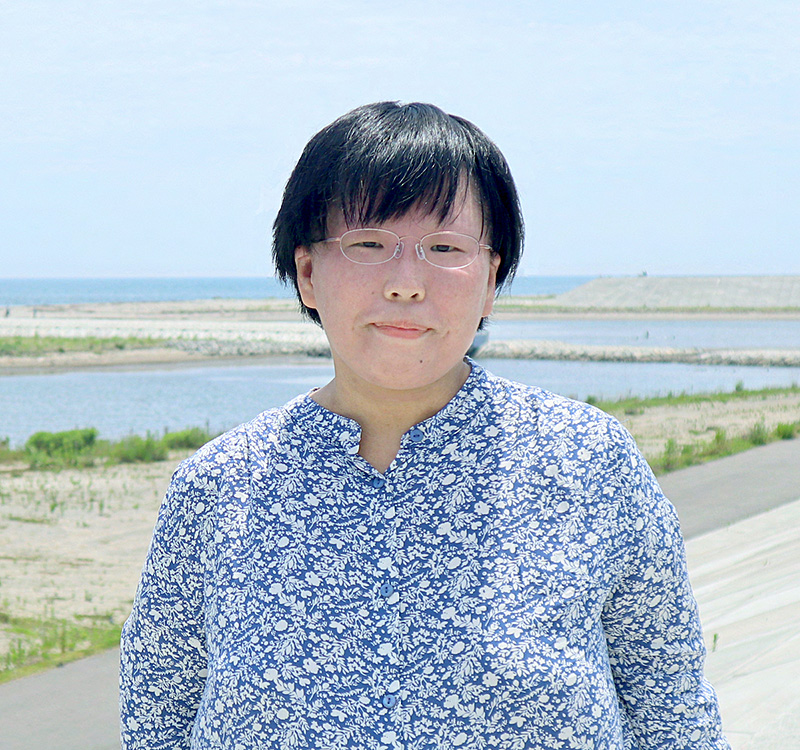AIR Bridge
AIR Bridge is aimed to share knowledge, experience, and know-how with other artist residencies program in Japan for utilizing in the development of each other’s activities.
AIR Bridge 2022

- Partner Institution:
- Daigo Town, Ibaraki
- Participating Artist:
- Satake Makiko
- Program Period:
- September 17 – October 31, 2022
In partnership with the town of Daigo, ARCUS Project held the forty-five-day artist-in-residence program AIR Bridge 2022. Following discussions with officials from Daigo over the candidates, and consideration of how best to make use of and rediscover the town’s resources and appeals, and not only the work made during the residency but also how to exhibit the results, Satake Makiko was selected for the program. Satake’s work deals with memories of disaster at specific places through the mediums of painting and text. For this program, she undertook a work exploring flood damage and Typhoon Hagibis, which hit Daigo in 2019. She came to see the area initially in August, before staying in the town at Daigo Artist in Residence from September 17 to October 31, 2022, to work on her project. During that time, she continued to conduct interviews and visit places damaged in the disaster. From October 9, the public could view her work in progress at Daigo Cultural Welfare Hall Mine followed by an exhibition at the same venue from October 22, where she showed both previous work and the results of her residency. On the final day of the residency, Satake gave a talk and shared stories related to her work about the flooding with visitors not only from Daigo but also Tokyo, Chiba, and Miyagi.
Satake Makiko
Japan

Artist Statement
Tracing the Flood
In autumn 2022, three years after Typhoon Hagibis, I walked along a riverbank during my first trip to Daigo. There were gaps among the houses. On the ground, amid the bathroom tiles that remained, a flower someone had planted seemed to bloom like it was performing a requiem rite, and I recalled what I’d been told by the sea in Sendai: This site is a ruin, not a vacant lot.
If time and memory layer up like geological strata, then a calamity connects the before and after of a change in strata color. Given that my visit coincided with the typhoon season, I was uncertain how to ask people about their memories of the flooding, but doing so revealed that those who spoke to me were similarly feeling their way through this process. “When there’s a flood, the subsequent lives of the people who live by the river and those who live on high ground are totally different,” someone told me, their voice interwoven with consideration for the people who live in the same place. I followed behind a person who retraced their steps, as if the immediate post-flood and current landscapes overlapped in their mind, and realized I was attending a moment of closure for them, of finding a place to deposit their feelings three years on.
On the evening of a very rainy day, people in the neighborhood gathered to watch the turbid waters. “The clouds on the mountains are thin. It’ll let up soon.” “Three years ago, the water started to overflow the other bank and flooded on this side too.” The vista from that time goes around and around the long-term residents’ bodies with their insights and intuition. “You’ll sleep well tonight. Keep an ear out for water running off the back of the mountain.” Their words calmed my noisy mind. The mountain, misty in the rain, was beautiful.
At the exhibition marking the end of my residency, I created a space with photo albums recording the typhoon that I borrowed from a Daigo photographer, and at which a girl who said she had moved to the area after the typhoon gazed for a long time. The paintings I make from the voices of the people appear slowly and belatedly. I layer up the colors, trying to imagine the paintings that could form a weld like those photo albums.

Field research


Exhibition at Daigo Cultural Welfare Hall Mine

Working in the studio